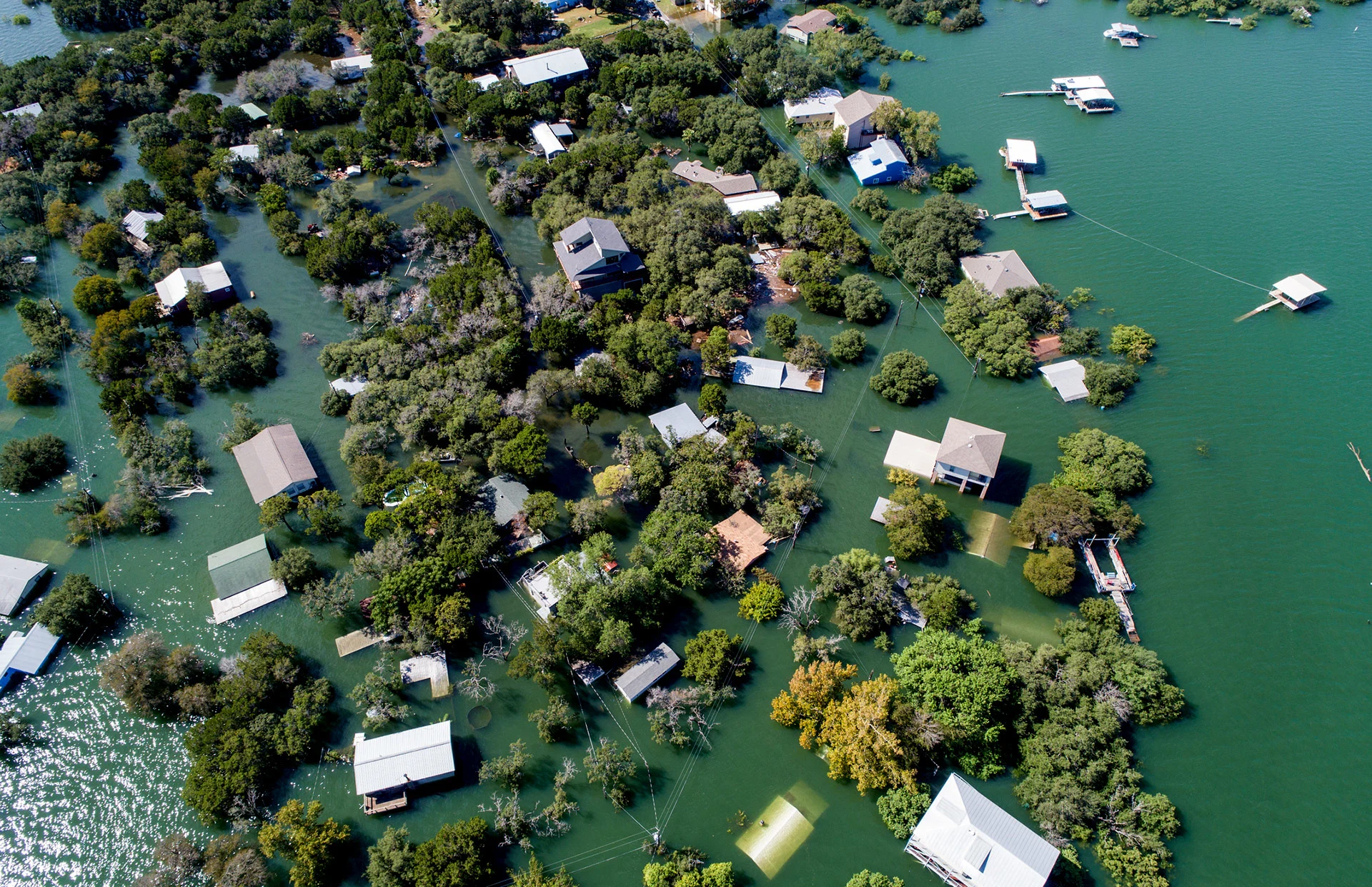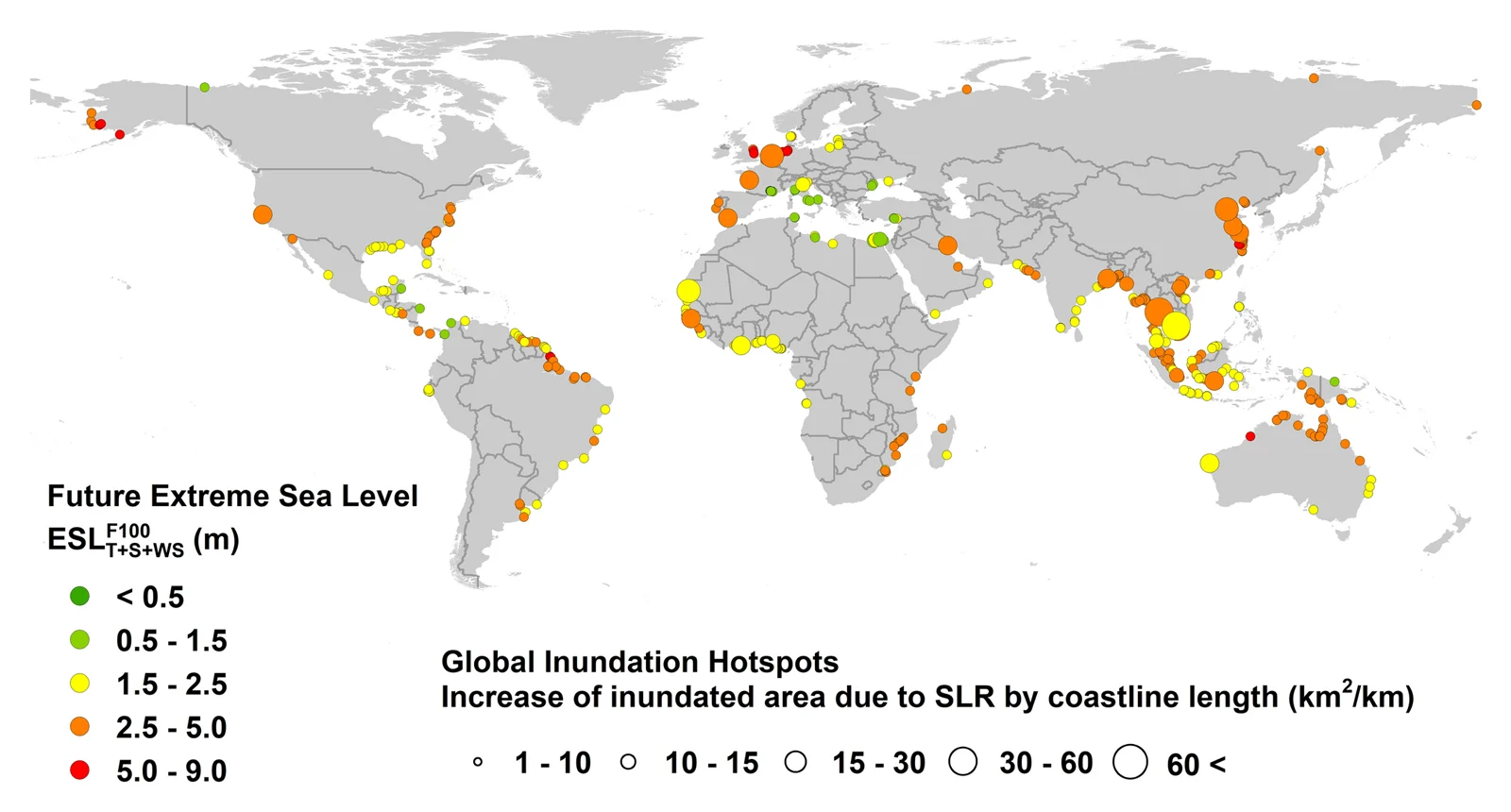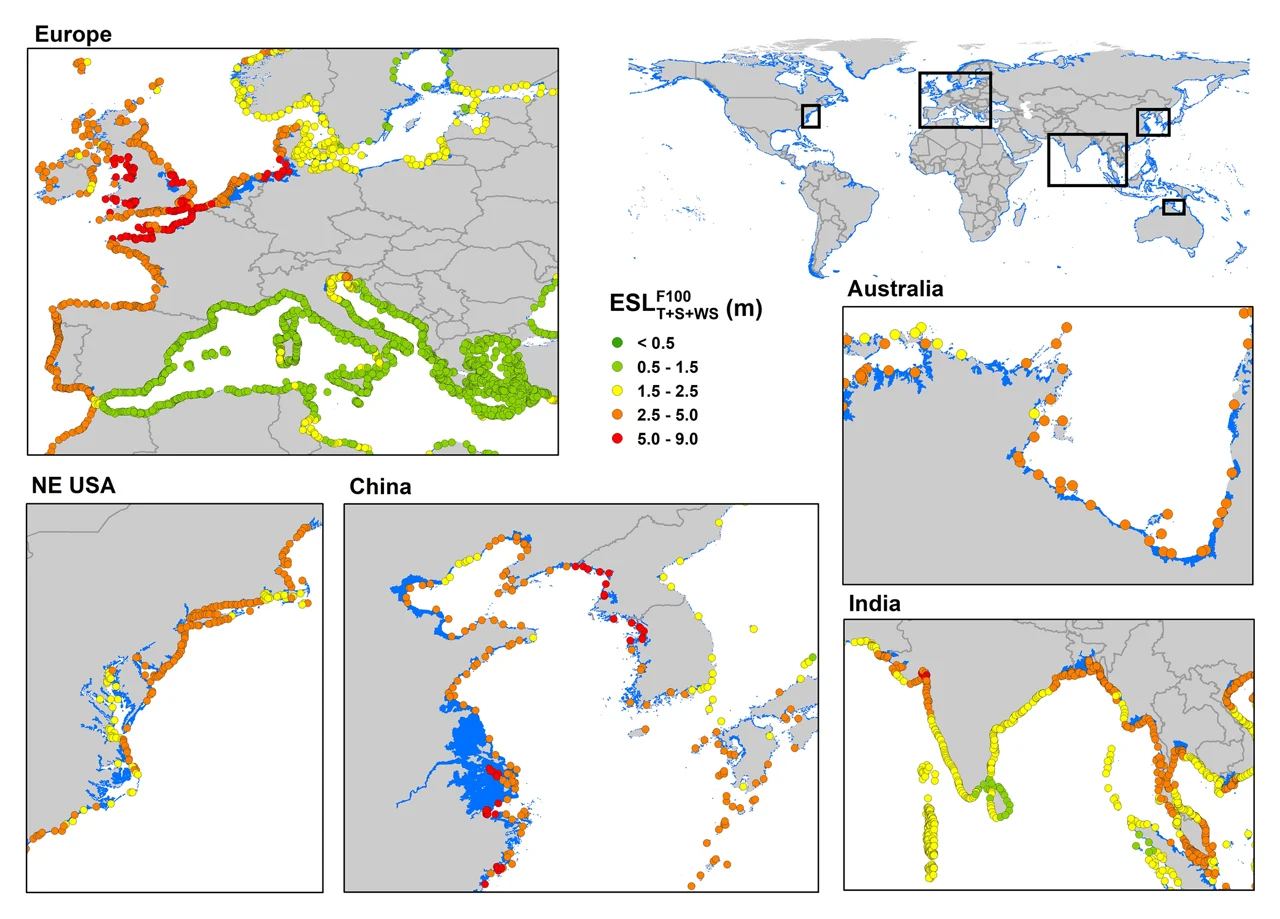
New study is 'wake-up call' to the rising global threat of coastal flooding
"What we see as a 1-in-100-year extreme flood event will be ten times more frequent because of climate change," the researchers said.
Coastal flooding events are expected to increase in frequency and severity over the next 100 years, according to a new study. The impacts of these events are estimated to affect hundreds of millions of people and cost the global economy trillions in damages.
Sea level rise due to climate change is a serious issue for the globe. As the ice sheets of Antarctica and Greenland succumb to increasing global temperatures, trillions of tonnes of ice are melting into the oceans. At the same time, the warming ocean water is expanding, increasing the volume of the oceans. The combined effect of this has resulted in measurable increases in ocean levels around the world.
Cities such as Miami, Florida are already dealing with the impacts, as they now experience frequent flooding simply due to the natural cycle of the tides. These fair-weather, increasingly routine floods are bad enough for the community. Their impacts are made even worse during hurricane season, as storm surges from passing cyclones amplify the problem significantly.
Previous climate projections have given us a look at the impacts of sea level rise around the world. A new study published this week in the journal Nature, has now taken a close look at how sea level rise combines together with the natural cycles of the tides and with storm surges from tropical cyclones, to increase the risk of coastal inundation.
The researchers found that if greenhouse gas emissions continue to increase at the current rate, by the year 2100, coastal flooding will increase in both frequency and extent. More than 250,000 square kilometres of coastal land that was once risk-free will be exposed to extreme flooding events. That represents a 48 per cent increase in exposure globally.
"A warming climate is driving sea-level rise because water expands as it warms, and glaciers are melting. Climate change is also increasing the frequency of extreme seas, which will further increase the risk of flooding," lead author Ebru Kirezci, who is a PhD candidate at the University of Melbourne, said in a university press release on Friday.
"What the data and our model is saying is that compared with now, what we see as a 1-in-100-year extreme flood event will be ten times more frequent because of climate change," she added.

This map reveals those regions around the world that the researchers identified as having the greatest impacts from the increase in global extreme flooding events. The colour of the dot indicates the expected sea-level rise. The size of the dot shows the increase in the flooded area. Credit: Nature/Kirezci, et al.
According to Kirezci and her colleagues, this adds roughly 77 million people around the world to those already at risk of experiencing extreme flooding, bringing the total to 225 million people worldwide by 2100. Also, these flooding events could cost up to $14.2 trillion in damaged infrastructure - buildings, roads, energy production, etc. - which totals around one-fifth of the current global economy.
Those areas identified by the researchers as being at the highest risk from these impacts include western and northwestern Europe, India, Bangladesh, southeast Asia and northern Australia, eastern China, and along the east coast of the United States.

Those regions of the world with the most significant potential risks due to the combined impacts of sea-level rise and storm surge. Coloured dots indicate the potential severity of the flooding. The blue shaded regions indicate the possible extent of the inundation. Credit: Nature/Kirezci, et al.
"Our research shows that large parts of communities residing in low-lying coastal areas are at risk of being devastated, so we need urgent action. Vulnerable areas need to start building coastal defences, we need to increase our preparedness, and we need to be following strategies to mitigate climate change," Kirezci said.
Some regions of the world already have coastal defences in place to protect against current flooding. Some account for future sea level rise in their design. This study, however, shows that relative sea level rise will only account for less than one-third of coastal flooding by 2100. Nearly two-thirds are expected due to the combination of tides and storm surges, which current defences may not protect against.
"This is critical research from a policy point of view because it provides politicians with a credible estimate of the risks and costs we are facing, and a basis or taking action," study co-author Professor Ian Young said in the press release. "This data should act as a wake-up call to inform policy at global and local government levels so that more flood defences can be built to safeguard coastal life and infrastructure."
Sources: University of Melbourne | Nature












